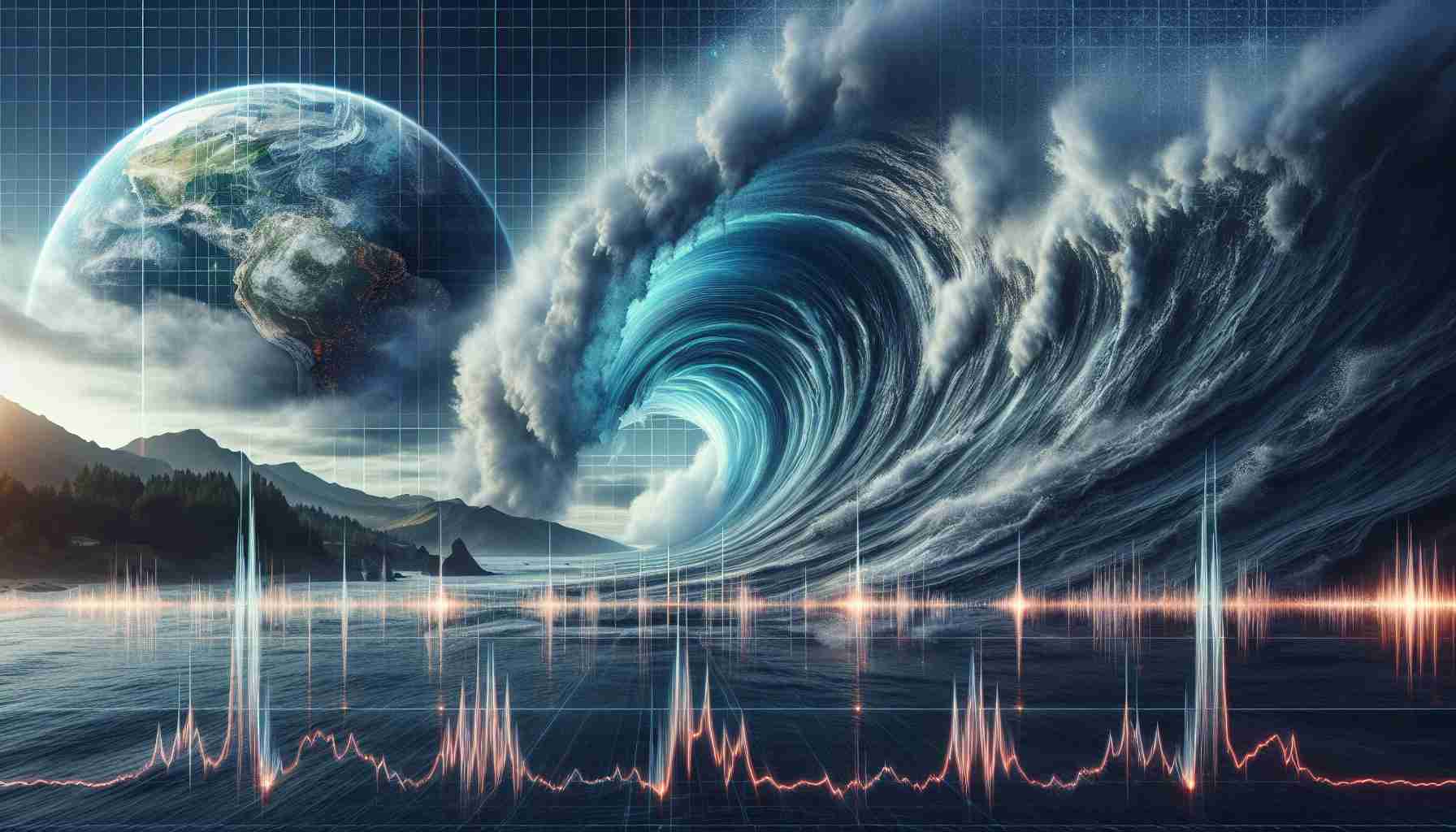
Last September, a cataclysmic event shook Greenland’s landscape and reverberated across the globe. The triggering incident was a significant landslide, resulted from a melting glacier, which unleashed a colossal mega-tsunami towering over 650 feet. Interestingly, this event also generated a mysterious vibration that persisted for an astonishing nine days.
A team of international scientists dedicated a year to decipher the unusual seismic signals. According to a recent study published in the journal Science, their findings suggest that the Arctic is facing unprecedented changes due to escalating human-induced climate change. Some researchers initially were concerned that their equipment was malfunctioning, as the unusual signals resembled a low, sustained hum rather than the typical crash of an earthquake.
Upon investigation, the vibrations traced back to a specific area in eastern Greenland. Collaboration with Danish experts revealed that a tsunami had followed a landslide in Dickson Fjord, confirming that climate-induced hazards are cascading through the environment.
This scenario unfolded as a glacier, steadily retreating due to rising temperatures, destabilized a towering mountain. The resultant geological collapse released an immense volume of rock into the fjord, creating a seiche, or oscillating wave, trapped within the fjord’s confines. Lasting nine days, this phenomenon shocked researchers and showcased an unprecedented persistence previously unobserved in scientific literature.
While no casualties were reported from the tsunami, significant damage to cultural heritage sites occurred, highlighting the potential risks for local navigation routes. The event stands as a precautionary tale about the tangible impacts of climate change on Earth’s geological and cultural landscape.
Unprecedented Tsunami and Global Seismic Vibrations Linked to Climate Change: A New Perspective
The recent mega-tsunami in Greenland has opened a critical dialogue about the impacts of climate change, not just locally but across the globe. As we dissect the implications of this event, it’s essential to consider various angles, including the potential for future occurrences and the pressing questions surrounding our understanding of climate-related geological phenomena.
What are the primary questions surrounding the Greenland tsunami and its implications?
1. What are the connections between climate change and geological events?
Climate change causes glaciers to melt and destabilize rock formations, leading to landslides that can trigger tsunamis. The Greenland event illustrates this relationship starkly as warming temperatures directly affect geological stability.
2. How likely are similar events to occur in the future?
As climate change progresses, the frequency of landslides in glacial regions could increase, leading to more frequent mega-tsunamis and prolonged seismic vibrations similar to those observed in Greenland.
3. What does the global seismic activity landscape look like post-event?
The Greenland tsunami suggests that global seismic activity may also be influenced by regional climate phenomena. This interconnectivity raises concerns about how local conditions can have far-reaching impacts on global seismicity.
Key Challenges and Controversies
– Scientific Debate on Causation: There is ongoing debate among scientists regarding whether climate change can be conclusively linked to increased geological instability. Some researchers argue that historical data reveals similar events occurred long before significant anthropogenic changes.
– Measurement and Monitoring: Accurately measuring and predicting seismic events triggered by climate change poses significant challenges. Advanced technology and interdisciplinary approaches are needed to assess risks effectively.
– Public Perception and Policy Implications: Many communities remain skeptical about the links between climate change and geological disasters, complicating policy development aimed at mitigating risks associated with these events.
Advantages and Disadvantages
Advantages:
– Enhanced Awareness: Such events raise awareness about the broader impacts of climate change and can catalyze action toward climate mitigation strategies.
– Scientific Progress: Investigations following the tsunami can lead to advancements in seismic monitoring technology and methodologies, benefiting global disaster preparedness.
Disadvantages:
– Economic Costs: Preparing for and responding to increased geological activity may strain financial resources for affected regions.
– Cultural Heritage Risks: As highlighted by the Greenland tsunami, the potential destruction of cultural heritage sites poses a significant social and ethical dilemma.
Conclusion
In conclusion, the unprecedented tsunami in Greenland provides a vital case study in understanding the intersection of climate change and geological events. As researchers continue to investigate, it is essential for communities, policymakers, and scientists to engage with the implications of these findings to develop a comprehensive approach toward climate resilience and disaster preparedness.
For those interested in exploring more about climate change and its global implications, visit IPCC.



